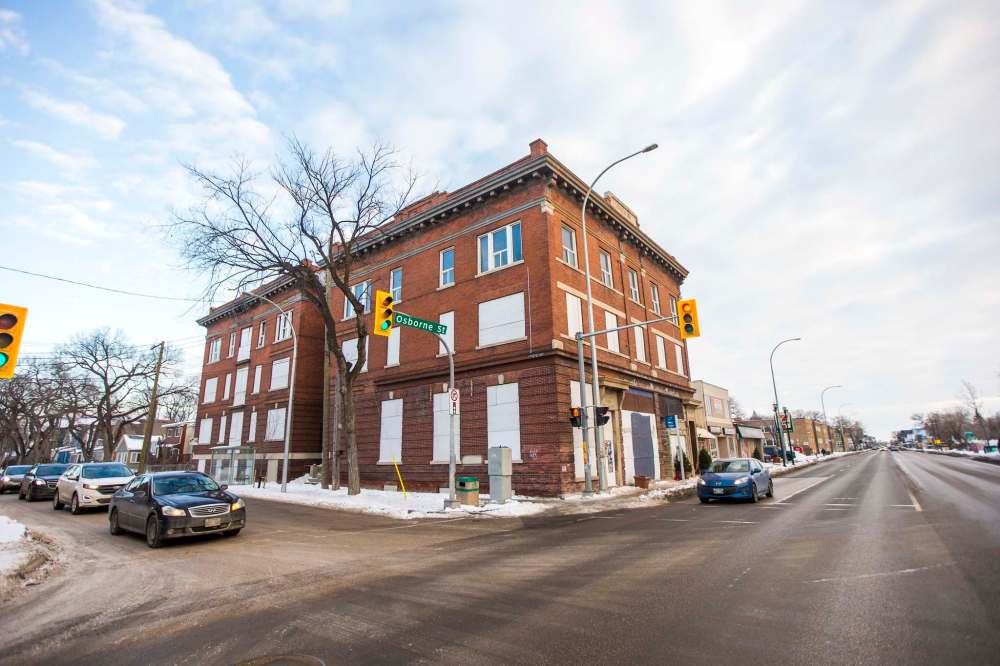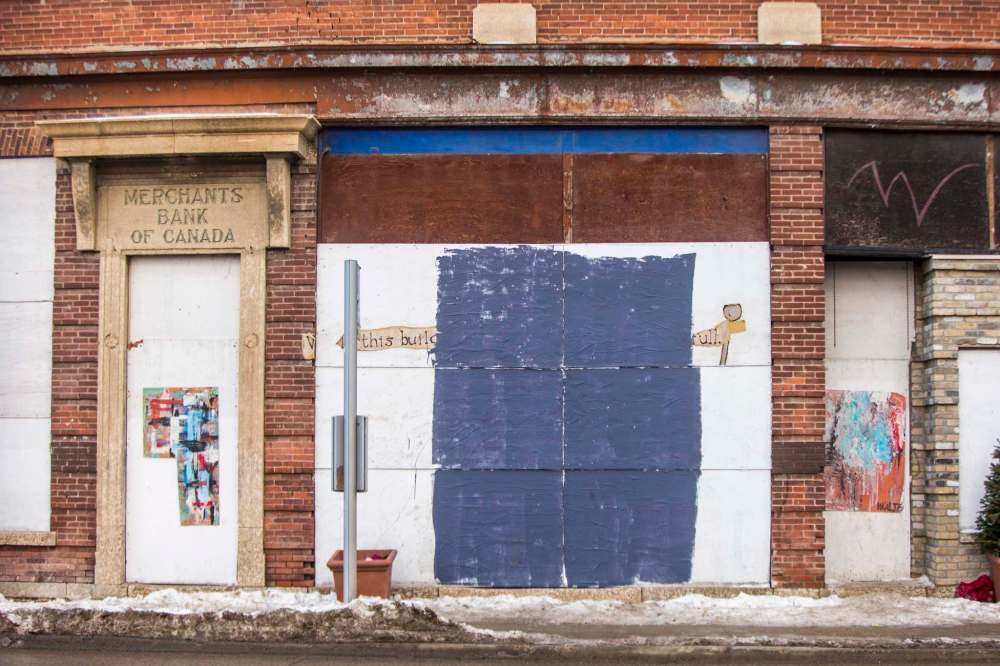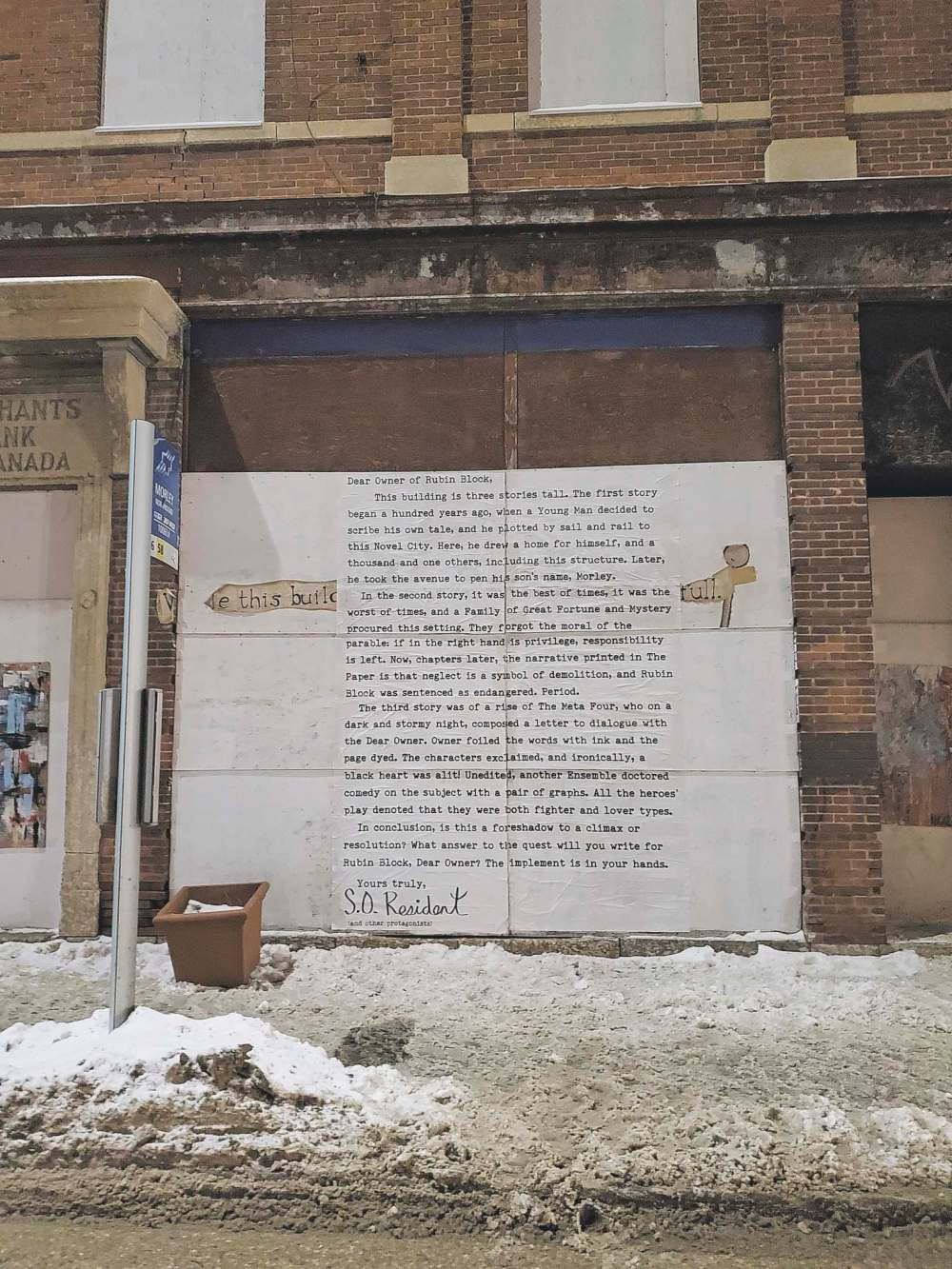In South Osborne, residents push for revitalized Rubin Block
Rubin Block in South Osborne sitting vacant since 2014
Advertisement
Read this article for free:
or
Already have an account? Log in here »
To continue reading, please subscribe:
Monthly Digital Subscription
$0 for the first 4 weeks*
- Enjoy unlimited reading on winnipegfreepress.com
- Read the E-Edition, our digital replica newspaper
- Access News Break, our award-winning app
- Play interactive puzzles
*No charge for 4 weeks then price increases to the regular rate of $19.00 plus GST every four weeks. Offer available to new and qualified returning subscribers only. Cancel any time.
Monthly Digital Subscription
$4.75/week*
- Enjoy unlimited reading on winnipegfreepress.com
- Read the E-Edition, our digital replica newspaper
- Access News Break, our award-winning app
- Play interactive puzzles
*Billed as $19 plus GST every four weeks. Cancel any time.
To continue reading, please subscribe:
Add Free Press access to your Brandon Sun subscription for only an additional
$1 for the first 4 weeks*
*Your next subscription payment will increase by $1.00 and you will be charged $16.99 plus GST for four weeks. After four weeks, your payment will increase to $23.99 plus GST every four weeks.
Read unlimited articles for free today:
or
Already have an account? Log in here »
Hey there, time traveller!
This article was published 11/01/2021 (1803 days ago), so information in it may no longer be current.
Nobody’s lived at the Rubin Block for more than six years.
Its 21 suites sit empty, with most boarded up. The main-floor windows are obscured by plywood, hardly windows at all, more like closed doors. The 106-year-old building at the corner of Osborne Street and Morley Avenue is on a national list of “endangered” places, and without intervention, it will be in danger of disappearing at a time when housing needs to be maintained and protected, a growing chorus of neighbourhood voices says.
One of those voices, a South Osborne man who refers to himself as S.O. Resident, recently put his words to paper: on Jan. 2, he glued an eight-by-11-foot treatise across the boarded-up windows, begging its owners to restore the Rubin back to its former self.

“What answer to the quest will you write for Rubin Block, Dear Owner?” he wrote. “The implement is in your hands.”
Nearly 1,500 people have signed a petition to the city, calling for the building to be refurbished into a site for affordable housing.
The building’s story began in 1914, when noted architect Max Blankstein designed it for Reuben Cohen. For 100 years, its main floor housed various tenants, including a pharmacist, confectioner, thrift store, and the office of former area MLA James Allum. Its upstairs units were occupied.
But in 2014, after two fires — the last one on the top floor — and a homicide, the building became vacant, the boards went up, and conversations with the block’s ownership, Composite Holdings Ltd., or the city, have since failed to generate any meaningful momentum. The Free Press contacted the company’s director, Alan Werier, but he would not comment about plans for the building.
Neighbourhood residents, who have met with city officials in the past to discuss the building, hope now is a good time to restart the conversation.
“Our hope is to have it become affordable or low-income housing, with a community-based commercial (tenant or tenants) on the main floor,” said Jean Altemeyer, who has lived in the neighbourhood since 1968. “Bottom line: folks would like the building occupied.”
Cindy Tugwell, the executive director of Heritage Winnipeg, says the organization got involved with the Rubin Block in 2015, and she took a tour of the top floor with the owner to see the damage, which was not catastrophic, she said. There was talk of refurbishing it, but Tugwell said since then, the ownership has paid the fees related to vacant buildings and associated inspections, but there has been minimal progress.
She says growing frustration over the lack of progress has sparked renewed discussions about the block among neighbourhood residents, especially because “there’s been a buyer lined up” for three years, willing to pay above market value for the property with a vow to convert it to affordable housing. The federal government’s Rapid Housing Initiative has also reinvigorated interest in that idea.
“By sitting on this property, (the owners) are stifling community development and urban renewal,” Tugwell said. And as the building remains vacant, she said, there’s a good chance property damage could decrease its potential for reuse and its value. “I really don’t have a logical answer (why the owners haven’t been interested).”
Tugwell and Altemeyer said without effective communication from the owner, the city government presents the only path forward.
Coun. Sherri Rollins, who represents the ward, says she would like to meet virtually with members of the Rubin Block’s advocacy group this month or early in February.

Rollins says the city’s vacant building bylaw has been strengthened in recent years, including the addition of an “empty building fee,” a payment of one per cent of a building’s assessed value, redirected to the city’s housing investment reserve. (The Rubin was assessed at $1.4 million in April 2018.)
The bylaw amendment is meant to discourage vacancies and fund housing programs, while the vacant building bylaw is “substantively about safety,” she said in an email. She said she’s also engaged with the owners as a member of the South Osborne BIZ and will continue to work on getting the building “unstuck.”
Tugwell suggested the city could explore taking the building’s title without compensation, which she acknowledged would be an arduous process.
“In order to take title without compensation, the building has to be non-compliant of the vacant building bylaw, a matter proven and argued successfully, in a provincial court of law,” Rollins wrote in response to the idea, which she said should not be considered lightly.
“(That) is not the case with the Rubin Block. The building is in compliance, paying their taxes, and when I last inquired, are in compliance with the City of Winnipeg bylaw requirements.”
Tugwell said she’s read the bylaw thoroughly, and understands its complexities, but Altemeyer and others feel the disincentive isn’t strong enough if the stagnancy persists. “I guess what we’re saying is, if we can’t fix this problem, we have to strengthen the bylaw,” Tugwell said.
As for the petition, it’s not the first time the public has put pen to paper in hopes of changing the Rubin Block’s future: a similar campaign was undertaken in the early 2010s, with Allum, who was the MLA, a vocal advocate for the revitalization of the building.
Allum said he tried to reason with the block’s owners, but once the city put the boards up, “it was a clear indication (the owners) had no intention of doing anything.”
But Allum said he “expected much more from the city, which, with maybe the exception of bylaw enforcement, has generally turned a blind eye to the building and done nothing to rectify the situation.”
“As inconceivable as it seems, the building is actually in far worse shape in 2021 than it was when I first started talking to (Werier),” Allum wrote in an email. “Yet the same people still own the building. It’s as ridiculous as it is outrageous.”
In 2019, the building was placed on the National Trust for Canada’s top 10 list of endangered buildings.

“(Protecting buildings) is not just about heritage buildings,” said Chris Wiebe, the Ottawa-based trust’s manager of heritage policy and government relations, who once lived in Winnipeg. “We have to make better use of what we already have.”
Local residents, and business owners, see the current housing and economic climate as an added impetus to give the building a new life.
“When you let a building rot on a main route, it’s sad for everyone who passes it, especially a building with such a long history,” said Sam Rivait, a co-owner of Good Fortune Barbershop, a new business set to open across the street. “The sheer amount of people begging for revitalization is a testimony of its importance.”
Rivait and others hope the owners are paying attention, and S.O. Resident is certain they’re aware of the outcry: less than 24 hours after posting his treatise, a man wearing a black balaclava stood in front of the Rubin Block, paint roller in hand, and covered the eight-by-11 grid in blue.
The next day, S.O. Resident stapled a smaller version of his letter onto the blue square.
“What did Joan Baez say?” he asked. “Action is the antidote to despair.”
ben.waldman@freepress.mb.ca

Ben Waldman is a National Newspaper Award-nominated reporter on the Arts & Life desk at the Free Press. Born and raised in Winnipeg, Ben completed three internships with the Free Press while earning his degree at Ryerson University’s (now Toronto Metropolitan University’s) School of Journalism before joining the newsroom full-time in 2019. Read more about Ben.
Every piece of reporting Ben produces is reviewed by an editing team before it is posted online or published in print — part of the Free Press‘s tradition, since 1872, of producing reliable independent journalism. Read more about Free Press’s history and mandate, and learn how our newsroom operates.
Our newsroom depends on a growing audience of readers to power our journalism. If you are not a paid reader, please consider becoming a subscriber.
Our newsroom depends on its audience of readers to power our journalism. Thank you for your support.
History
Updated on Monday, January 11, 2021 9:52 AM CST: corrected copy



